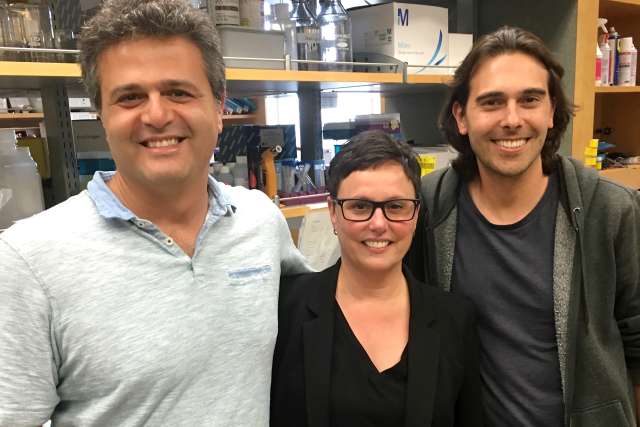Three UCLA neuroscientists — Michele Basso, Dr. Peyman Golshani and Daniel Aharoni — received a nearly $3.7 million, three-year grant from the National Institutes of Health for a study that will develop imaging technology that allows the recording of tens of thousands of neurons to better understand how the brain goes awry in disease.
The grant, part of the National Institutes of Health’s Brain Research Through Advancing Innovative Neurotechnologies, or BRAIN, Initiative, will support the team’s work to design, manufacture and test a miniature microscope for measuring brain activity in non-rodent animals. The UCLA neuroscientists are with the Jane and Terry Semel Institute for Neuroscience and Human Behavior, and the Brain Research Institute of the David Geffen School of Medicine at UCLA.
The goal of the initiative, first announced in 2013 by President Barack Obama, is to gather more information and tools to better understand how the brain functions, both in health and in disease. By unraveling some of the mysteries of the brain, the project aims to develop better ways to diagnose and treat neurological and psychiatric disorders, such as Alzheimer’s disease, autism, epilepsy, Parkinson’s disease and depression.
The UCLA team is led by Basso, a professor of psychiatry and biobehavioral sciences and a leader in cognitive and systems neuroscience. Golshani, an associate professor of neurology, and Aharoni, an assistant professor of neurology, both are leaders in imaging technology.
“We have a unique set of expertise that we brought together here at UCLA,” said Basso, who is director of the Fuster Laboratory of Cognitive Neuroscience at the Semel Institute.
The UCLA team will leverage the expertise of scientists at other institutions, including Johns Hopkins University, the Massachusetts Institute of Technology and New York University, to test the new devices developed at UCLA.
“There are nearly 100 billion neurons and 100 trillion connections between those neurons in the brain,’’ Basso said. “The new techniques to be developed with this award will enable us to image larger regions of the brain, previously inaccessible regions of the brain, and more of the neurons within the brain than current technology allows. This provides a unique opportunity to get a signature of cognitive processes in health and disease.”
Basso added that the new technologies would also enable higher-resolution imaging and longer wireless recording of brain activity. That capability will allow the researchers, for the first time, to ask neuroscientific questions that they previously could not.
“Our efforts also will result in the development of open-source tools that can be shared with the neuroscience community at low cost, lowering the barriers for research,” Golshani said.
Learn more about the neuroscience research theme at UCLA.



